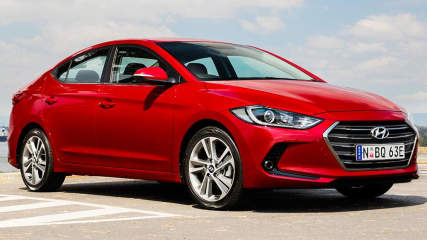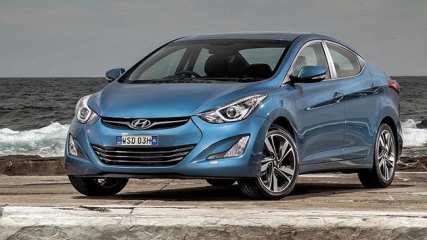Hyundai Elantra SX 2006 review
By Stephen Corby · 07 Nov 2006
When criticised, car companies can, and do, react in a number of violently different ways. My personal favourite is the silent treatment, which is easy to deal with (and, if you're really lucky, can go on foryears).More common, however, is the huffing Hinch approach, where someone who sounds like they've just inhaled a supertanker load of righteous indignation gives you a point-by-point analysis of why you're an idiot.If you've really offended them, this conversation might end with you being banned from driving their cars, for ever more. In the case of some companies, this is what is known as a blessing indisguise.Then, at the most extreme end of the spectrum, there are companies who actually take on board what you've said and do something about it.Step forward Hyundai Australia, which reacted to some rather cruel and cantankerous criticism of the lifeless steering on its new Elantra, written in these pages, by having three engineers flown out from Korea to fix it.Hyundai spokesman Richard Power said he believed the cars delivered for the Australian launch were specified for the Asian region, rather than Europe, which has similar demands to the local market."A few days after the Australian launch we had an international launch, with journos from the Middle East right across to the Pacific, and we think the cars came with their spec," he said."We took your comments on board and swung into action, asking Korea if we could do something about it."Three specialist chassis engineers were duly dispatched and spent an intensive week comparing the Elantra with other cars sold here, testing and re-testing the steering and recalibrating it."We now have our own, unique steering setting for Australia," Power said."Basically, it was a case of changing the feel of the set-up to something that might be better accepted by a greater range of Australian motorists."It's got more feel and more self-centring as speed rises, yet it's still very light at parking speeds, which is what you want."The Koreans then flew home and instituted a change on the production line, so that all cars delivered in Australia will have the new steering.It's quite common for global companies such as Hyundai to produce cars with two or three suspension settings, applicable to particular markets.Meanwhile, we were asked to have another go at the Elantra, to revise our opinions.Sure enough, the steering is much improved. It's still not class-leading, and it's certainly not Porsche-challenging, but at least it loads up a bit in corners and there's decent feedback about what your wheels are up to.Compared to the previous ropey and dopey steering, it's a solid 300 to 400 per cent improvement — and for that, Hyundai should be applauded.Unfortunately, the other criticisms we noted on the launch drive were still valid after a week of living with the car.Most notable is the touchy throttle, which can tend to make both driver and passengers look like Muppets as their necks bend at unfeasible angles.Although the two-litre engine can be rowed along with reasonable ease if you've got the manual gearbox, which is a reasonably smooth unit, we spent more time in the auto, which tends to complain long and loud when asked to perform more than a traffic trundle.Still, it's an honest enough performer for an engine developing just 105kW and 186Nm.The cabin is a passable copy of more expensive cars — the blue mood lighting at night is a particularly nice touch — but there's still an overall feeling of thin-ness to the car, which kind of comes with the price territory.It's also annoying that, at night, there's no indicator light to tell you which gear the auto is in.One of the Elantra's big selling points is supposed to be its fuel consumption, with claimed economy of 7.4 litres per 100km (7.8 in the auto), but over a week of fairly relaxed motoring we averaged 9.0 litres, which isn't quite so spectacular.On the plus side, with a range that begins at $19,990, the Elantra is actually quite a lot of car for the money.It rides much better than past models and, thanks to that quick fix, it steers pretty well, too.There's also a decent back seat, with more leg room than you'd imagine, and the styling — which is a bit of a mish-mash of ideas borrowed from Japanese companies — somehow works as a whole.For those who simply have to have a new, family-ish-sized car, but don't want to spend a lot of money, the new and improved Elantra is an obvious option.
.jpg)
.jpg)




